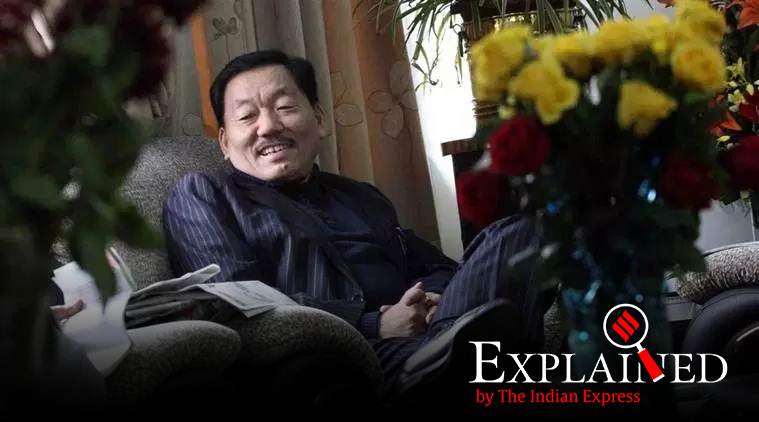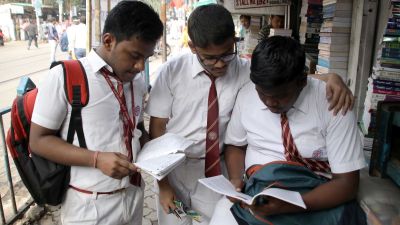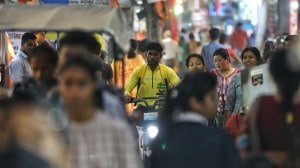- India
- International
Monarchy to long-term CM to instability: how did Sikkim get here?
Political instability is new to this relatively young state, where Chamling served as Chief Minister for 25 years starting 1994.
 Pawan Chamling. (Express Archive/Oinam Anand)
Pawan Chamling. (Express Archive/Oinam Anand)
Last week, Sikkim’s longest serving Chief Minister, Pawan Chamling, became the sole elected Opposition representative in the Assembly after the remaining 12 Sikkim Democratic Front (SDF) MLAs defected, with 10 joining the BJP and another two joining the ruling Sikkim Krantikari Morcha (SKM). Political instability is new to this relatively young state, where Chamling served as Chief Minister for 25 years starting 1994. It began when the SKM voted out the SDF with a slim margin time in April this year.
What happened in the Assembly elections?
It was actually the 2014 elections that had heralded the arrival of the SKM, formed the previous year by Chamling’s former protégé P S Tamang, also known as P S Golay. The SKM won 10 of the 32 Assembly seats with 40.8 per cent of the vote, while the SDF held on with 22 seats and 55 per cent.
This year, the SKM edged out the SDF by 17 seats to 15 but was marginally behind in vote shares, at 47.03 per cent to the SDF’s 47.63 per cent. In terms of actual members, the SDF had 13 because two of them had won from two seats each.
It was the first time in the state that a government has been voted out. Sikkim has had a change in government twice earlier, but the incumbent government had already fallen before the new one was voted in. Some analysts look at the current situation as the birth of Sikkim as a true democracy. A kingdom until recently, Sikkim was seen as continuing with a “monarchic psychology” as long as Chamling was in the chair.
Why has there been political instability after the elections?
Behind in vote shares, the SKM won narrowly in most seats, while the SDF’s margins were generally much wider. As such, the SKM government has looked tentative. The SKM will look to consolidate in upcoming byelections to three seats, two of these held by the SDF and one by the SKM itself.

Golay himself is in a precarious position. He did not contest the elections, having been convicted of corruption by a Sikkim court based on charges brought by the previous SDF government. He has approached the Supreme Court to overturn the conviction, as well as the Election Commission to allow him to contest the bypolls. He served a year in jail and was released in August 2018.
How is the BJP placed?
On the face of it, the BJP’s gains do not directly strengthen the SKM but appear to have weakened the SDF’s hopes of toppling the government. The 10 defections, however, signal the BJP’s arrival in the state where it had won only 0.7 per cent of the vote share in 2014 and 1.6 per cent in 2019, after having contested 13 seats on both occasions. Both the SDF and the SKM are part of the NEDA nationally but contest separately from the BJP in the state.
In a state dominated by regional parties, the defection of 10 SDF MLAs has suddenly made BJP the main opposition. SDF leaders claim that the MLAs have switched parties for fear of persecution from the SKM. Sources said SDF leaders maintain cordial relations with the BJP, despite the defections.
How did the SKM gain ground?
During the SDF regime, Sikkim had done well on many social and economic indicators. According to state government data, its per capita income is Rs 2,33,311 as opposed to the national average of Rs 86,660; its life expectancy is 73.15 compared to the national average of 68.6; and its literacy rate for both men and women is above 90 per cent as compared to the national average of 74 per cent and 65 per cent respectively. According to NITI Aayog data, Sikkim’s infant mortality rate is 16 per 1,000 live births (2016) compared to the national IMR of 34. Sikkim was also the first state to be declared open-defecation free.
The SKM campaigned by questioning these achievements and highlighting reports of corruption within the SDF government. Unemployment is seen as a major driver for change, especially with 60 per cent of voters being under the age of 40, and 16 per cent being first-time voters.
What was Sikkim’s history before this new phase of political instability?
According to the Anglo-Chinese Convention of 1890, representatives of the British Crown and the Emperor of China mutually agreed that Sikkim would remain a protectorate of the British Government. Sikkim itself was not consulted for the agreement.
Under the Indo-Sikkim Treaty of 1950, Sikkim was to become a protectorate of the Indian Government while maintaining its autonomy. In 1952, the Sikkim Legislative Assembly was to consist of 17 members, five of whom were to be nominated by the Maharaja.
Violent protests in the early 1970s when agitators demanded a more democratic constitution for Sikkim, as well as more powers for the elected representatives, led to a breakdown of law and order in the princely state. A May 8, 1973 agreement among the Indian government, the Chogyal (Maharaja) and representatives of political parties in Sikkim signalled the princely state’s first brush with democracy. In April 1975, the Sikkim Assembly abolished the institution of the Chogyal and declared Sikkim a constituent of India. The same month, the Indian government introduced the 36th Amendment to the Constitution making Sikkim a state of the country.
More Explained
EXPRESS OPINION
Apr 20: Latest News
- 01
- 02
- 03
- 04
- 05









































